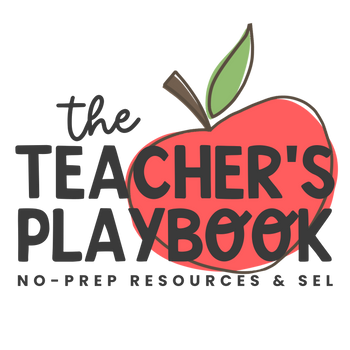Ever wish there was a way to turn classroom chaos into calm? If keeping your class focused sometimes feels like herding cats, you’re not alone. Teaching can feel like a juggling act - lesson plans, behaviors, and emotional needs all vying for your attention. Overwhelming, right?
Here’s the good news: mindfulness can be a game-changer. Research shows that mindfulness in the classroom doesn’t just help students stay focused; it also reduces stress, builds emotional resilience, and fosters stronger relationships. Let’s dive into the science, strategies, and resources to bring mindfulness into your classroom today.
How Mindfulness in the Classroom Changes Lives
At its core, mindfulness is about being fully present. Sounds simple, right? But its impact on the brain is profound:- Boosts Focus: Strengthens the prefrontal cortex, improving attention and decision-making.
- Reduces Stress: Calms the amygdala, helping kids and teachers respond to challenges calmly.
- Improves Emotional Regulation: Teaches students to manage their emotions, reducing disruptions.
Proven Strategies for Teaching Mindfulness to Students
If you’ve seen kids struggling with focus, acting out in frustration, or withdrawing in anxiety, mindfulness can help. Start with these foundational steps:Step 1: Build a Foundation
- Start Calm: Introduce mindfulness when students are relaxed. Skip teaching new techniques during meltdowns.
- Focus on Breath: Model mindful breathing - inhale through the nose, exhale through the mouth.
- Start Small: Begin with just 10 seconds of focused breathing, guiding students to simply notice their breath. Praise their efforts by acknowledging small successes, such as staying still or following the rhythm, to build confidence and encourage further practice.
Step 2: Practice During Transitions
Use natural pauses in the school day to practice mindfulness. For example, guide students through a brief breathing exercise in the hallway before entering the classroom, or during moments when the class feels unsettled. These short, consistent practices help integrate mindfulness into the flow of the day.Step 3: Expand Gradually
Once students are comfortable, increase the duration and variety of mindfulness practices. Incorporate techniques like guided visualization or body scans to deepen their engagement.Step 4: Be Consistent
Make mindfulness a regular part of your daily routine by weaving it into the rhythm of the school day. Begin and end the day with short breathing exercises to create structure, or use mindful moments to help students transition between activities calmly. These small, intentional integrations ensure mindfulness becomes a natural and effective part of your classroom environment.Practical Ways to Integrate Mindfulness into the Classroom
Mindfulness can be seamlessly woven into your classroom routine with small, effective practices:- Start and End with Breathing: Begin the school day with a short mindful breathing session to set a calm and focused tone, and end the day with another to help students transition out of the classroom with a sense of calm. These mindful moments at the beginning and end of the day help create a structured rhythm, making it easier for students to start learning and wind down effectively as they leave the classroom.
- Manage Noise Levels: Use a calming sound, like a chime (or another simple signal, such as a clap, snapping fingers, or turning off the lights briefly), to signal the class to pause and take a deep breath together.
- Transition Mindfully: Use silent hand cues to prompt a quiet breath before moving to the next activity. For example, you can raise your hand to signal silence, hold up two fingers as a cue to inhale and exhale, or make a small gesture like pointing to your lips to encourage quiet mindfulness.
- Model Emotional Regulation: When you’re upset, name the emotion (“I’m feeling frustrated”) and demonstrate taking a calming breath. This normalizes emotions and encourages self-awareness.
- Create Quiet Spaces: Designate an area for students to practice deep breathing during transitions or moments of overwhelm. If space is limited in your classroom, consider using a hallway or another quiet corner of the school where students can take a moment to reset.
Engaging Mindfulness Practices Students Love
- 5-Finger Breathing: Guide students to trace their hand, breathing in as they move up a finger and out as they move down. This tactile method grounds attention and calms nerves.
- Hot Cocoa Breathing: Ask students to pretend they’re holding a cup of hot cocoa. Inhale deeply to “smell” it, and exhale slowly to “cool” it down. This visualization makes breathing fun and engaging.
- Balloon Breathing: Ask students to picture a balloon expanding in their belly as they inhale deeply, and then deflating slowly as they exhale. This visualization helps students engage with the exercise while practicing steady, deep breathing.
- Mindful Listening: Have students close their eyes and identify the sounds around them for one minute. Discuss observations to build focus.
- Body Scan: Lead students through a mental scan of their body by asking them to close their eyes and focus on each part of their body in turn, starting at the top of their head and working down to their toes. Encourage them to notice any areas of tension or relaxation, imagining those tense areas softening as they breathe deeply. This practice works well after recess or before a test to help students settle and refocus.
Resources to Support Your Journey
To make mindfulness a seamless part of your classroom, explore these resources:- "20 Breathing Exercises for Kids": A set of 20 posters or cards with simple visualizations of breathing exercises for children. Perfect for helping students practice mindfulness and regulate emotions, these resources make mindfulness fun and accessible.
- "Calming the Storm": This engaging resource combines storytelling, creative activities, and mindfulness techniques to help teachers bring emotional regulation into the classroom with ease. Designed to be practical and fun, it gives you everything you need to help students manage big emotions and build lifelong mindfulness skills.
- Free Sample Download: Get 3 breathing exercises free to start integrating mindfulness into your classroom.

